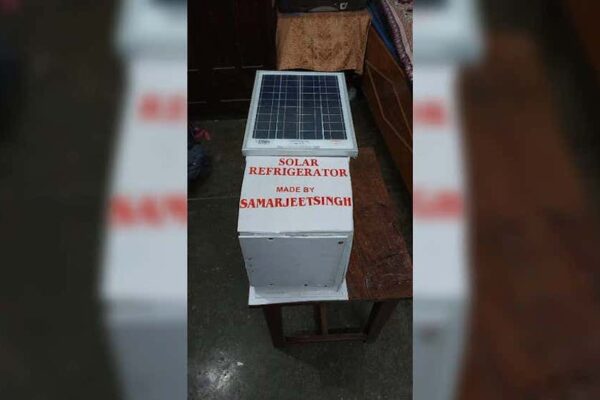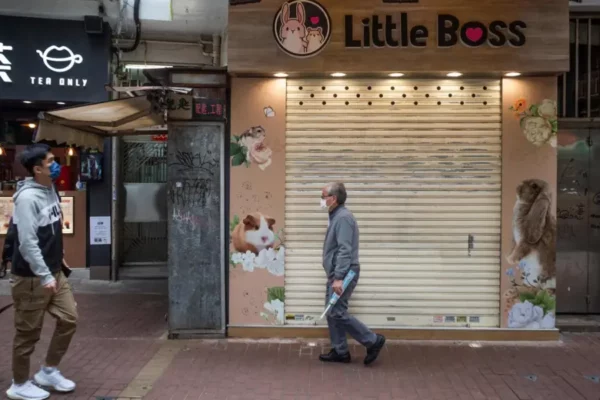India Barrels Towards Viral Apocalypse amid Election Campaigns and Unapt Health System
The second wave (or rather the tsunami) of coronavirus has hit India!
Last year, the Indian government received applause for its ‘admirable efforts to handle the coronavirus’ from various foreign dignitaries, but only the citizens of India knew the real picture. Migrants stuck in cities without a roof over their heads or food in their bellies, thousands dying of hunger and disease, millions losing their jobs, and an unraveling health system.
Nevertheless, the country started to feel a bit normal towards the end of 2020. From a peak of over 93,000 cases per day on average in mid-September 2020, infections had steadily declined to an average of 11,000 cases per day by mid-February 2021.
All was not well yet the Indians – bureaucratic and laymen alike – presumed it was and forgot every precautionary exercise.
Last month, Indian health minister Harsh Vardhan declared the country was “in the endgame” of the COVID-19 pandemic. He applauded Prime Minister Narendra Modi’s leadership as an exemplary one in handling the pandemic.
The optimism of the health minister was based on a sharp drop in reported cases – before the number of infected persons and fatalities skyrocketed in March and April 2021.
False Sense of Security
The euphoria at beating the virus had been in the air since late last year. Half the country believed that the nightmare was truly over.
By the end of February, the country’s election authorities announced key elections in five states where 186 million people were eligible to vote. In March, the country witnessed many election rallies in full swing, with no safety protocols and social distancing.
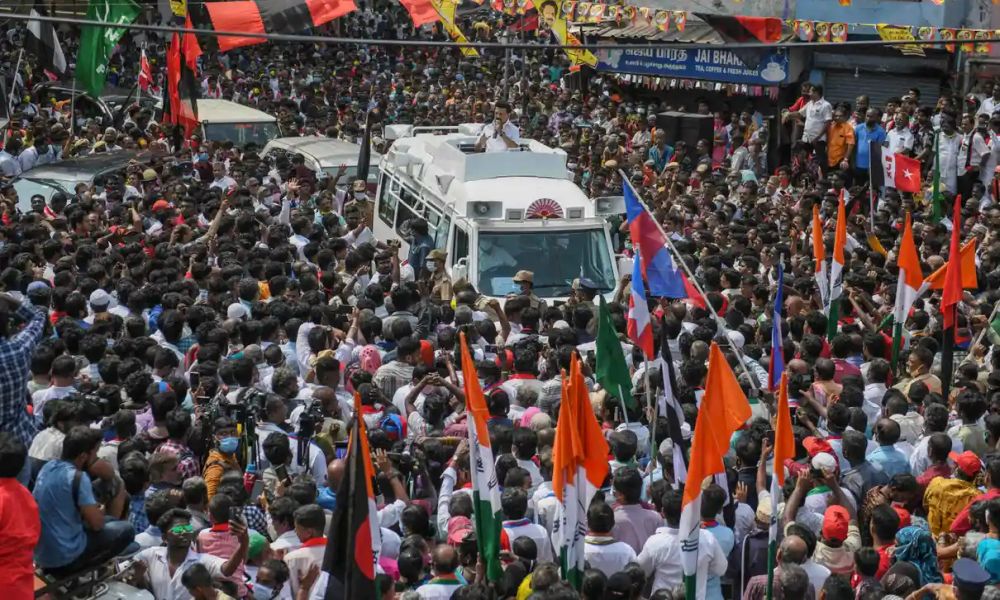
The second coronavirus wave hits India amid continued election rallies and religious gatherings as Indian health system crumbles under pressure | Image: Arun Sankar/AFP
By Mid-March, the cricket board had allowed over 1,30,000 fans to attend two international cricket matches between India and England at the Narendra Modi stadium in Gujarat.
And in less than a month, things unraveled for the country.
India is now experiencing a devastating second wave of the coronavirus, with cities facing fresh lockdowns. By mid-April, the country saw over 1,00,000 cases a day. On April 18, India recorded over 2,70,000 new cases and over1,600 deaths within 24 hours.
The false sense of security among the government and the citizens of India led to the country’s uncontrollable COVID-19 outburst. The situation has completely overwhelmed the country’s healthcare system and crematoriums and has led to a serious shortage of oxygen.
Second Coronavirus Wave Hits India
A rather serious second coronavirus wave hits India as the country relies entirely on its sub-optimal, already crumbling health system and everyone throws caution to the wind.
Over the past two weeks, India has become one of the world’s worst-hit pandemic hotspots with over 3,00,000 reported cases every day.
Now in the grips of a public health emergency, India is overwhelmed with mourning relatives of the deceased outside hospitals, long lines of ambulances carrying critical patients, morgues overrun with the dead, and patients, sometimes two to a bed, in corridors and lobbies of hospitals.
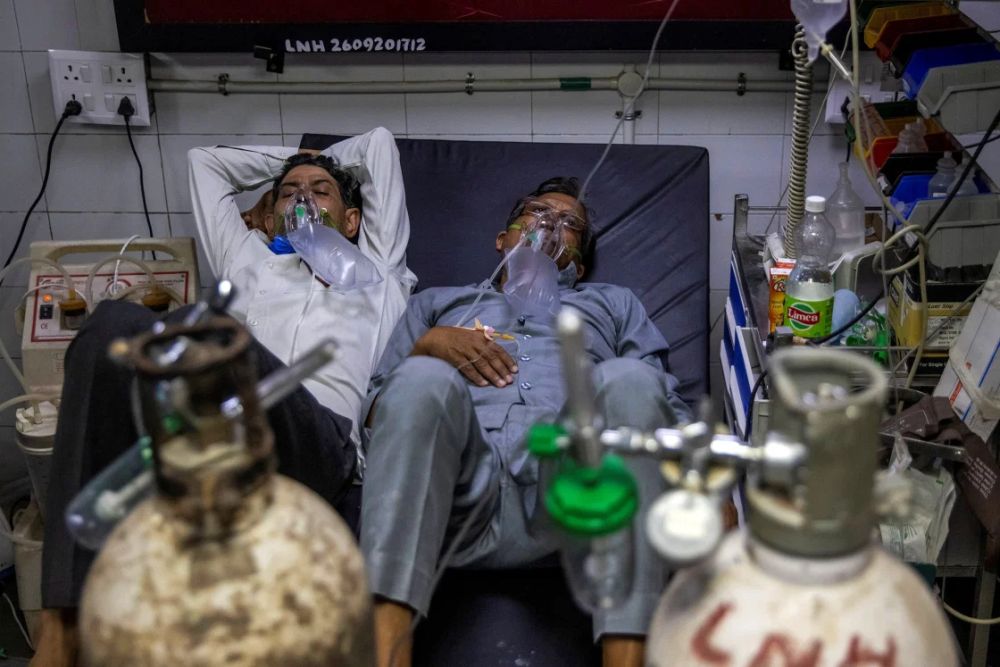
The hospitals are overwhelmed with patients, sometimes two to a bed, in corridors and lobbies | Image: Danish Siddiqui/Reuters
For the consecutive fourth day, India has set an undesirable world record for new coronavirus infection, with 3,49,691 more cases in 24 hours on April 25, with 2,767 deaths.
Most hospitals in Delhi are running out of oxygen; and as many hospitals are operating at their full capacity, new admissions are being refused, owing to the uncertainty over oxygen supply.
“The frontline, the emergency room at a covid hospital, under the weight of an unfolding disaster”. @yogital, Fred Scott & Sanjay Ganguly ground report from #Delhi. WARNING this is very distressing pic.twitter.com/sCDxRwxx8L
— Nicola Careem (@NicolaCareem) April 23, 2021
Oxygen-equipped ambulances are in deficit and it is becoming difficult to transport patients to hospitals even if there are any beds available.
In a heartbreaking incident in Nashik, Maharashtra, at least 22 people died on April 22, after a leak in an oxygen tank disrupted supply to critical patients on ventilators.
The medical staff has been desperately trying to save the patients, but the situation has started to shake their spirits as well.
Various Indian media outlets have reported some states with oxygen-producing facilities being reluctant to release supply, fearing they might face shortages as well. Many reports from central India say that some tanks of medical oxygen were looted by relatives of COVID-19 patients.
The situation was not as such last year when the first cases emerged and India saw a spike in cases by mid-year. The current scenario has created fear and panic in the citizens with the healthcare system being overburdened.
A Grim Scenario
Earlier studies on the new coronavirus revealed that social distancing and staying indoors are some of the most effective solutions to limit the spread of the virus.
Maharashtra: Shortage of medical oxygen in a number of hospitals in Nashik District
Only when the oxygen supply is increased we’ll be able to admit more patients. We need 50 cylinders daily but we’re getting only 30 cylinders, says Dr.Yogesh More, Uma Hospital pic.twitter.com/F9NnYZHNIc
— ANI (@ANI) April 15, 2021
But a new MIT research has discovered that the widely used 6-foot rule does not help much in preventing COVID-19 exposure indoors. The study identifies mask-wearing, ventilation, and what space is used for as bigger variables.
Martin Bazant, MIT professor said,
This distancing isn’t helping you that much and it’s giving you a false sense of security because you are as safe at 6 feet as you are at 60 feet if you’re indoors. Everyone in that space is at roughly the same risk, actually.
Meanwhile, the Indian government has ordered Facebook, Instagram and Twitter to block close to 100 posts about the COVID-19 scenario of India, calling them misinformative, inflammatory, or aimed to create panic.
On the other hand, doctors and experts are using social media to share crucial information about the new and more infectious COVID-19 strain, which reportedly has been downplayed by government officials for months.
The earlier believed pillars of the country’s low virus rate – younger population, native immunity, a largely rural population – have miserably crumbled in front of the second wave of the coronavirus.
A Premature Celebration
The health experts and doctors are baffled as the new emerging cases of the second wave have brought about a new trend where entire families have fallen prey to the virus – young or older, healthy or sick – people are contracting the virus left and right.
Experts now have termed “India’s exceptionalism in beating the endemic” a “premature celebration.”
According to Mihir Sharma, a columnist for Bloomberg,
As is typical in India, official arrogance, hyper-nationalism, populism and an ample dose of bureaucratic incompetence have combined to create a crisis.
India’s second wave was fueled by people letting their guard down as the vaccine rolled out. Attending weddings and social gatherings, mixed messages from the government, allowing political rallies and religious gatherings created a laid-back atmosphere and grounds for the virus to spread drastically.
Many experts believe that a second wave may have been inevitable but India could have “postponed, or delayed it and lessened its impact.”
K Srinath Reddy, the president of the Public Health Foundation of India, said,
There was a feeling of triumphalism. Some felt we had achieved herd immunity. Everyone wanted to get back to work. This narrative fell on many receptive ears, and the few voices of caution were not heeded to.
Most epidemiologists predict more waves, given that India is evidently still far away from reaching herd immunity and its vaccination rate still remains slow.
Panic and Anger
Unlike the country’s mainstream media which has refrained from questioning the state over its lack of leadership in these perilous circumstances, the international media is not holding back from calling out the lack of leadership in India amid the second wave.
The Indian government’s decision to allow large gatherings in election rallies and Kumbh Mela even as the country was grappling with the second wave has created a state of panic and anger.
Despite enforcing one of the strictest lockdowns last year, the authorities seem unable to cope with a renewed COVID-19 surge.
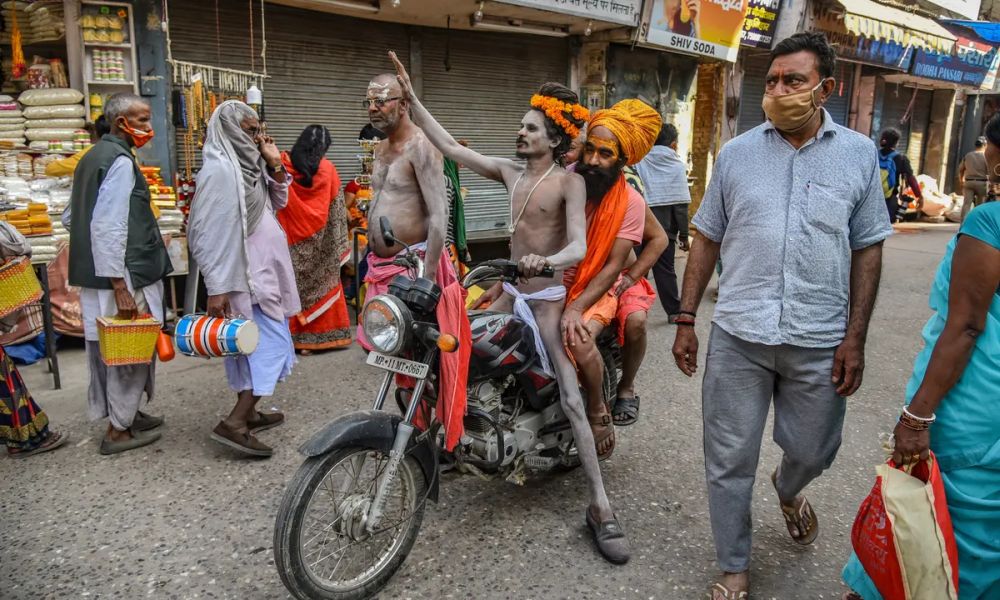
Large gatherings in election rallies and Kumbh MelaImage ignores what’s the need of the hour | Idrees Mohammed/EPA
Modi government is facing mounting worldwide criticism for its poor handling of the crisis as oxygen, drugs, tests, and hospital beds remain in critically short supply in the worst-hit areas. The authorities, however, said that despite the huge scale of the health crisis lockdowns should be seen as a last resort.
India’s vaccination drive is also struggling with several states reporting shortages, although the central government has claimed there are enough stocks. Needless to say, the government is not the only one to be held responsible for the rising coronavirus epidemic in the country, the citizens are to be blamed equally.
With the arrival of the vaccine, almost everyone appeared to throw caution to the wind. Even as the cases climbed, various parties continued to hold mass election rallies with thousands of people unmasked. Religious gatherings have also fueled the fire.
A Rigorous Battle Afoot
The country needs to strap in and meticulously fight the new variant of the virus, together. The government must implement some strict regulations to reduce the spread of the coronavirus.
Besides, it is imperative for all to understand that while a few moments of public gatherings can help us feel normal again, they bear serious repercussions to the collective health.
The vaccination drives must speed up. We must let fiscal rather than RBI policy lead our crisis response to help us through the pandemic as the growing number of lockdowns will hurt the economy.
Around half the population can get two doses by the end of this year if the vaccination rate is increased from 3 million to 5 million doses per day.
The virus has disrupted economic activities, caused the loss of jobs, and interrupted the education system on a huge scale. To remedy these situations, the citizens and the authorities must work together and prepare the country to fight the new variants of the virus.
It would be wise to get ready to handle the medical emergency that the country is clearly approaching. Genuine efforts are the only way to deal with the exacerbating coronavirus situation in India.
